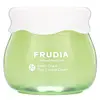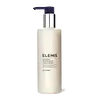What's inside
What's inside
 Key Ingredients
Key Ingredients

 Benefits
Benefits

 Concerns
Concerns

 Ingredients Side-by-side
Ingredients Side-by-side

Vitis Vinifera Fruit Extract 81%
Skin ConditioningMethylpropanediol
SolventGlycerin
Humectant1,2-Hexanediol
Skin ConditioningPEG/PPG-17/6 Copolymer
SolventWater
Skin ConditioningHydroxyethyl Urea
HumectantSodium Carbomer
Emulsion StabilisingBetaine
HumectantDimethicone
EmollientPanthenol
Skin ConditioningPhenoxyethanol
PreservativeOctyldodeceth-16
EmulsifyingPEG-60 Hydrogenated Castor Oil
EmulsifyingEthylhexylglycerin
Skin ConditioningParfum
MaskingPolyquaternium-51
Skin ConditioningDisodium EDTA
Coco-Caprylate/Caprate
EmollientPrunus Armeniaca Kernel Oil
MaskingVitis Vinifera Seed Oil
EmollientCI 15985
Cosmetic ColorantCI 19140
Cosmetic ColorantCI 42090
Cosmetic ColorantCitrus Paradisi Seed Oil
PerfumingMangifera Indica Seed Oil
EmollientPunica Granatum Seed Oil
EmollientSolanum Lycopersicum Seed Oil
EmollientTocopherol
AntioxidantVitis Vinifera Fruit Extract 81%, Methylpropanediol, Glycerin, 1,2-Hexanediol, PEG/PPG-17/6 Copolymer, Water, Hydroxyethyl Urea, Sodium Carbomer, Betaine, Dimethicone, Panthenol, Phenoxyethanol, Octyldodeceth-16, PEG-60 Hydrogenated Castor Oil, Ethylhexylglycerin, Parfum, Polyquaternium-51, Disodium EDTA, Coco-Caprylate/Caprate, Prunus Armeniaca Kernel Oil, Vitis Vinifera Seed Oil, CI 15985, CI 19140, CI 42090, Citrus Paradisi Seed Oil, Mangifera Indica Seed Oil, Punica Granatum Seed Oil, Solanum Lycopersicum Seed Oil, Tocopherol
Water
Skin ConditioningSodium Lauroyl Sarcosinate
CleansingGlycerin
HumectantCocamidopropyl Betaine
CleansingAcrylates Copolymer
Polysorbate 20
EmulsifyingCoco-Glucoside
CleansingGlycol Distearate
EmollientGlyceryl Oleate
EmollientSodium Lactate
BufferingDicaprylyl Ether
EmollientPhenoxyethanol
PreservativeLauryl Alcohol
EmollientParfum
MaskingSodium Chloride
MaskingOrbignya Oleifera Seed Oil
EmollientXanthan Gum
EmulsifyingSodium Hydroxide
BufferingCaprylyl Glycol
EmollientCitric Acid
BufferingPropylene Glycol
HumectantChlorphenesin
AntimicrobialGlyceryl Stearate
EmollientGalactoarabinan
Papain
Skin ConditioningDisodium EDTA
Behenyl Alcohol
EmollientButyrospermum Parkii Butter
Skin ConditioningBenzoic Acid
MaskingMoringa Oleifera Seed Extract
Skin ConditioningHydrogenated Castor Oil
EmollientDisodium Phosphate
BufferingStearyl Alcohol
EmollientProtease
ExfoliatingSubtilisin
Skin ConditioningTocopheryl Acetate
AntioxidantHydrogenated Palm Glycerides Citrate
EmollientTocopherol
AntioxidantPoria Cocos Extract
Skin ConditioningFrog Fat Extract
HumectantWater, Sodium Lauroyl Sarcosinate, Glycerin, Cocamidopropyl Betaine, Acrylates Copolymer, Polysorbate 20, Coco-Glucoside, Glycol Distearate, Glyceryl Oleate, Sodium Lactate, Dicaprylyl Ether, Phenoxyethanol, Lauryl Alcohol, Parfum, Sodium Chloride, Orbignya Oleifera Seed Oil, Xanthan Gum, Sodium Hydroxide, Caprylyl Glycol, Citric Acid, Propylene Glycol, Chlorphenesin, Glyceryl Stearate, Galactoarabinan, Papain, Disodium EDTA, Behenyl Alcohol, Butyrospermum Parkii Butter, Benzoic Acid, Moringa Oleifera Seed Extract, Hydrogenated Castor Oil, Disodium Phosphate, Stearyl Alcohol, Protease, Subtilisin, Tocopheryl Acetate, Hydrogenated Palm Glycerides Citrate, Tocopherol, Poria Cocos Extract, Frog Fat Extract
 Reviews
Reviews

Ingredients Explained
These ingredients are found in both products.
Ingredients higher up in an ingredient list are typically present in a larger amount.
Disodium EDTA plays a role in making products more stable by aiding other preservatives.
It is a chelating agent, meaning it neutralizes metal ions that may be found in a product.
Disodium EDTA is a salt of edetic acid and is found to be safe in cosmetic ingredients.
Learn more about Disodium EDTAGlycerin is already naturally found in your skin. It helps moisturize and protect your skin.
A study from 2016 found glycerin to be more effective as a humectant than AHAs and hyaluronic acid.
As a humectant, it helps the skin stay hydrated by pulling moisture to your skin. The low molecular weight of glycerin allows it to pull moisture into the deeper layers of your skin.
Hydrated skin improves your skin barrier; Your skin barrier helps protect against irritants and bacteria.
Glycerin has also been found to have antimicrobial and antiviral properties. Due to these properties, glycerin is often used in wound and burn treatments.
In cosmetics, glycerin is usually derived from plants such as soybean or palm. However, it can also be sourced from animals, such as tallow or animal fat.
This ingredient is organic, colorless, odorless, and non-toxic.
Glycerin is the name for this ingredient in American English. British English uses Glycerol/Glycerine.
Learn more about GlycerinParfum is a catch-all term for an ingredient or more that is used to give a scent to products.
Also called "fragrance", this ingredient can be a blend of hundreds of chemicals or plant oils. This means every product with "fragrance" or "parfum" in the ingredients list is a different mixture.
For instance, Habanolide is a proprietary trade name for a specific aroma chemical. When used as a fragrance ingredient in cosmetics, most aroma chemicals fall under the broad labeling category of “FRAGRANCE” or “PARFUM” according to EU and US regulations.
The term 'parfum' or 'fragrance' is not regulated in many countries. In many cases, it is up to the brand to define this term.
For instance, many brands choose to label themselves as "fragrance-free" because they are not using synthetic fragrances. However, their products may still contain ingredients such as essential oils that are considered a fragrance by INCI standards.
One example is Calendula flower extract. Calendula is an essential oil that still imparts a scent or 'fragrance'.
Depending on the blend, the ingredients in the mixture can cause allergies and sensitivities on the skin. Some ingredients that are known EU allergens include linalool and citronellol.
Parfum can also be used to mask or cover an unpleasant scent.
The bottom line is: not all fragrances/parfum/ingredients are created equally. If you are worried about fragrances, we recommend taking a closer look at an ingredient. And of course, we always recommend speaking with a professional.
Learn more about ParfumPhenoxyethanol is a preservative that has germicide, antimicrobial, and aromatic properties. Studies show that phenoxyethanol can prevent microbial growth. By itself, it has a scent that is similar to that of a rose.
It's often used in formulations along with Caprylyl Glycol to preserve the shelf life of products.
Tocopherol (also known as Vitamin E) is a common antioxidant used to help protect the skin from free-radicals and strengthen the skin barrier. It's also fat soluble - this means our skin is great at absorbing it.
Vitamin E also helps keep your natural skin lipids healthy. Your lipid skin barrier naturally consists of lipids, ceramides, and fatty acids. Vitamin E offers extra protection for your skin’s lipid barrier, keeping your skin healthy and nourished.
Another benefit is a bit of UV protection. Vitamin E helps reduce the damage caused by UVB rays. (It should not replace your sunscreen). Combining it with Vitamin C can decrease sunburned cells and hyperpigmentation after UV exposure.
You might have noticed Vitamin E + C often paired together. This is because it is great at stabilizing Vitamin C. Using the two together helps increase the effectiveness of both ingredients.
There are often claims that Vitamin E can reduce/prevent scarring, but these claims haven't been confirmed by scientific research.
Learn more about TocopherolWater. It's the most common cosmetic ingredient of all. You'll usually see it at the top of ingredient lists, meaning that it makes up the largest part of the product.
So why is it so popular? Water most often acts as a solvent - this means that it helps dissolve other ingredients into the formulation.
You'll also recognize water as that liquid we all need to stay alive. If you see this, drink a glass of water. Stay hydrated!
Learn more about Water